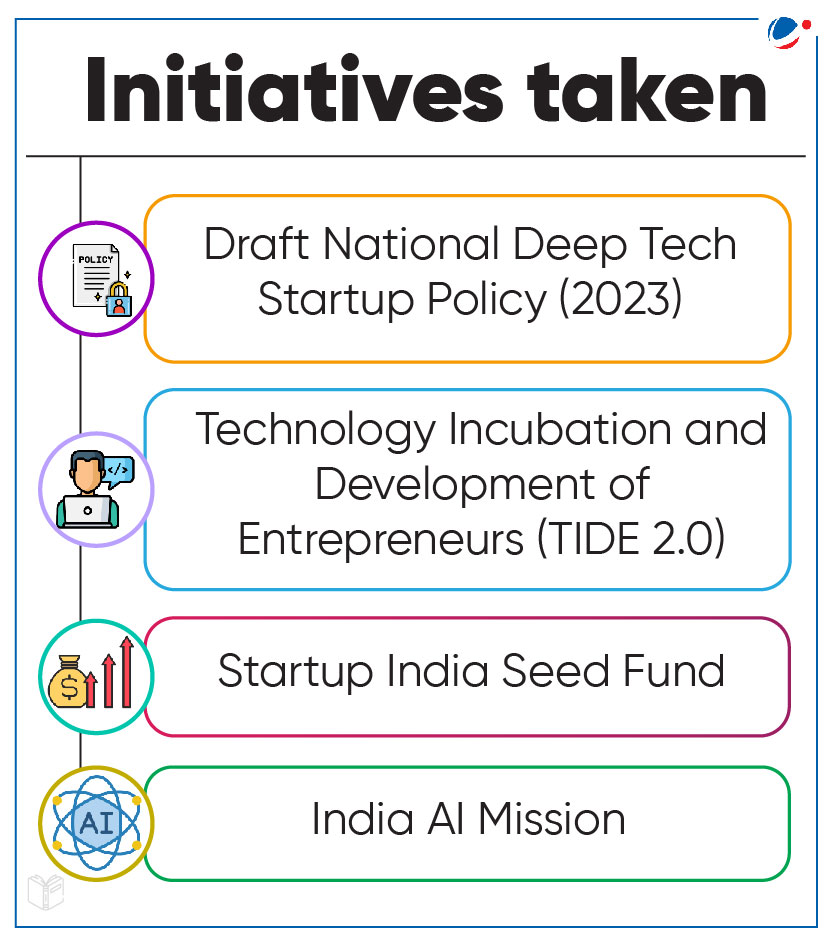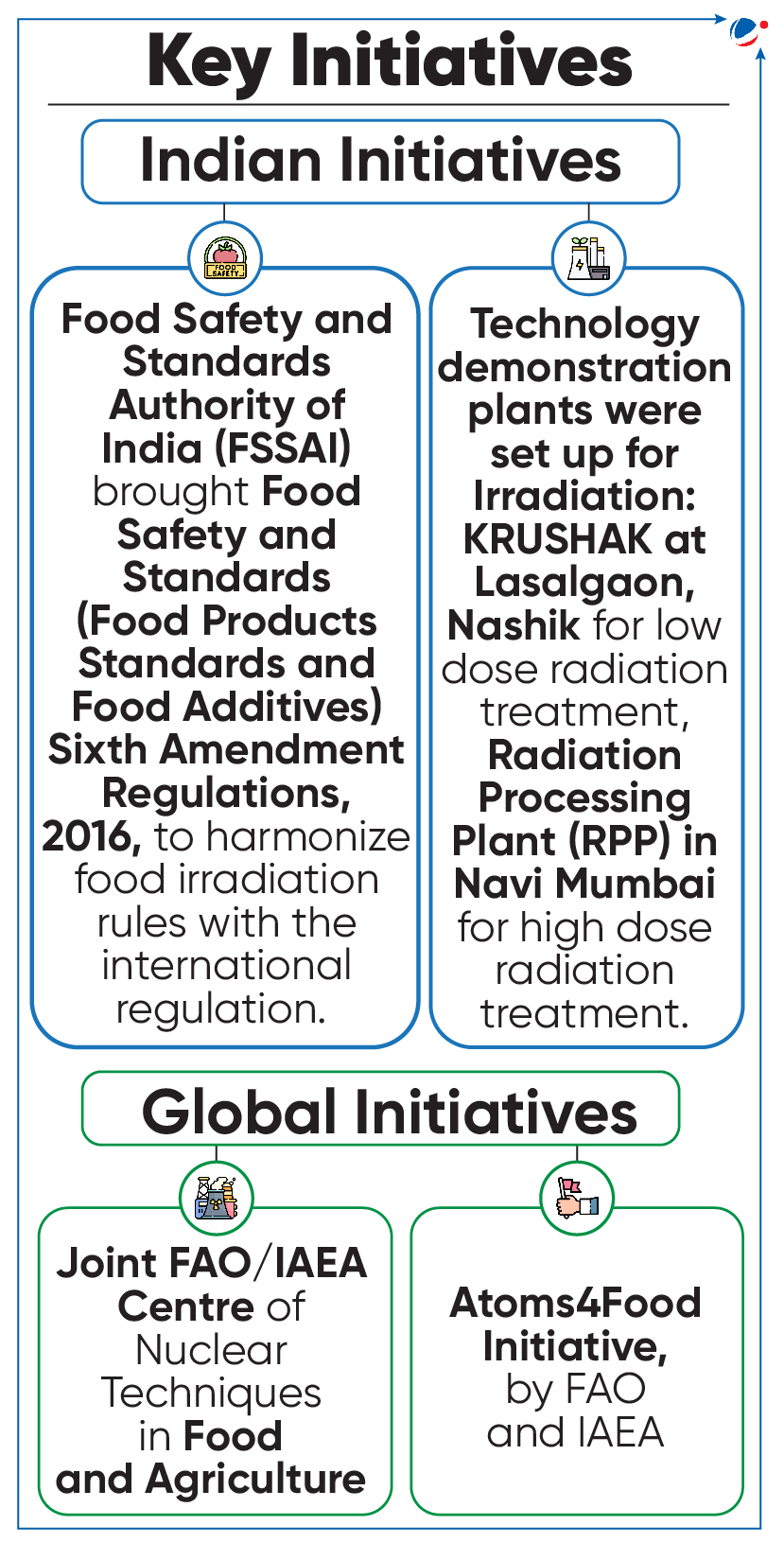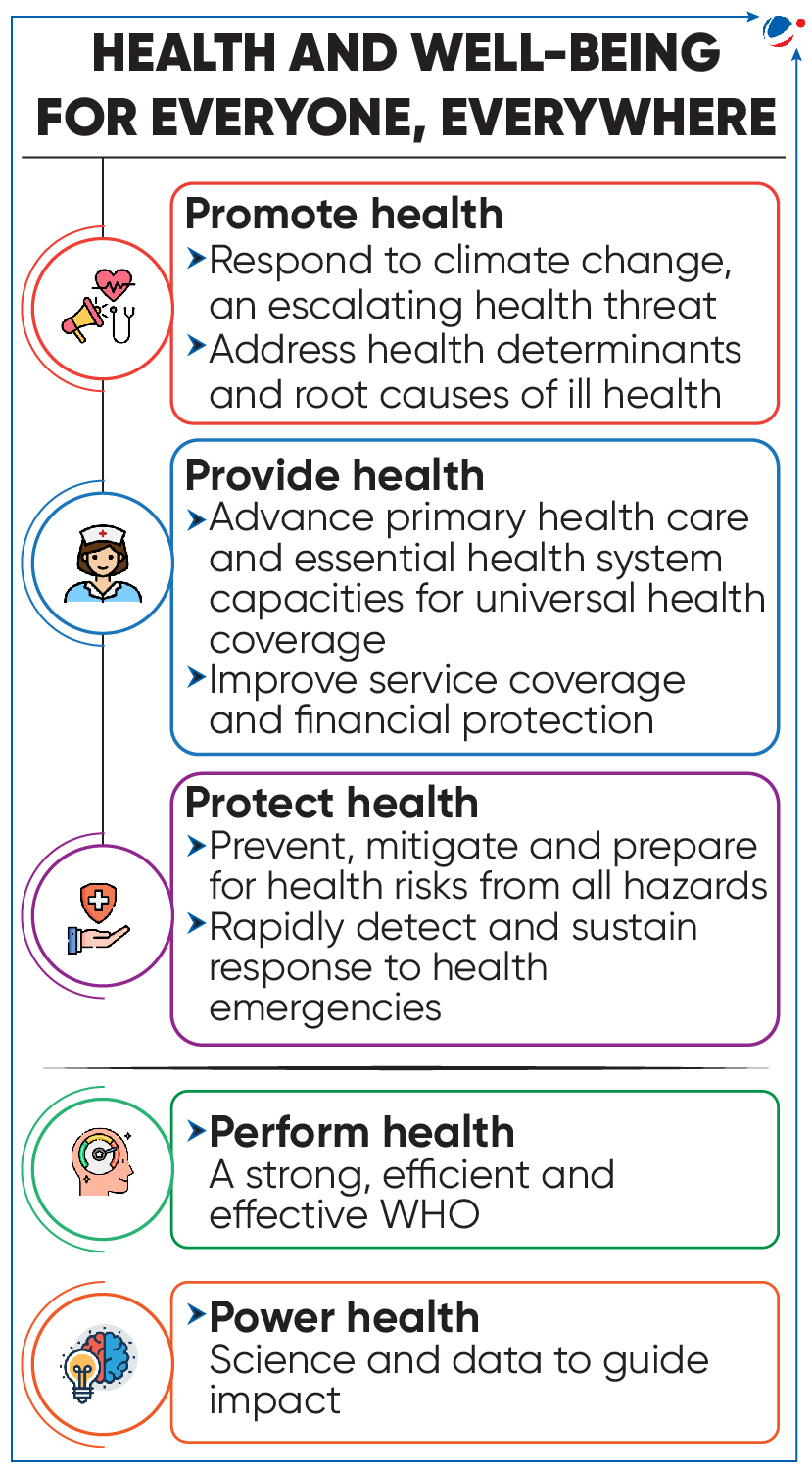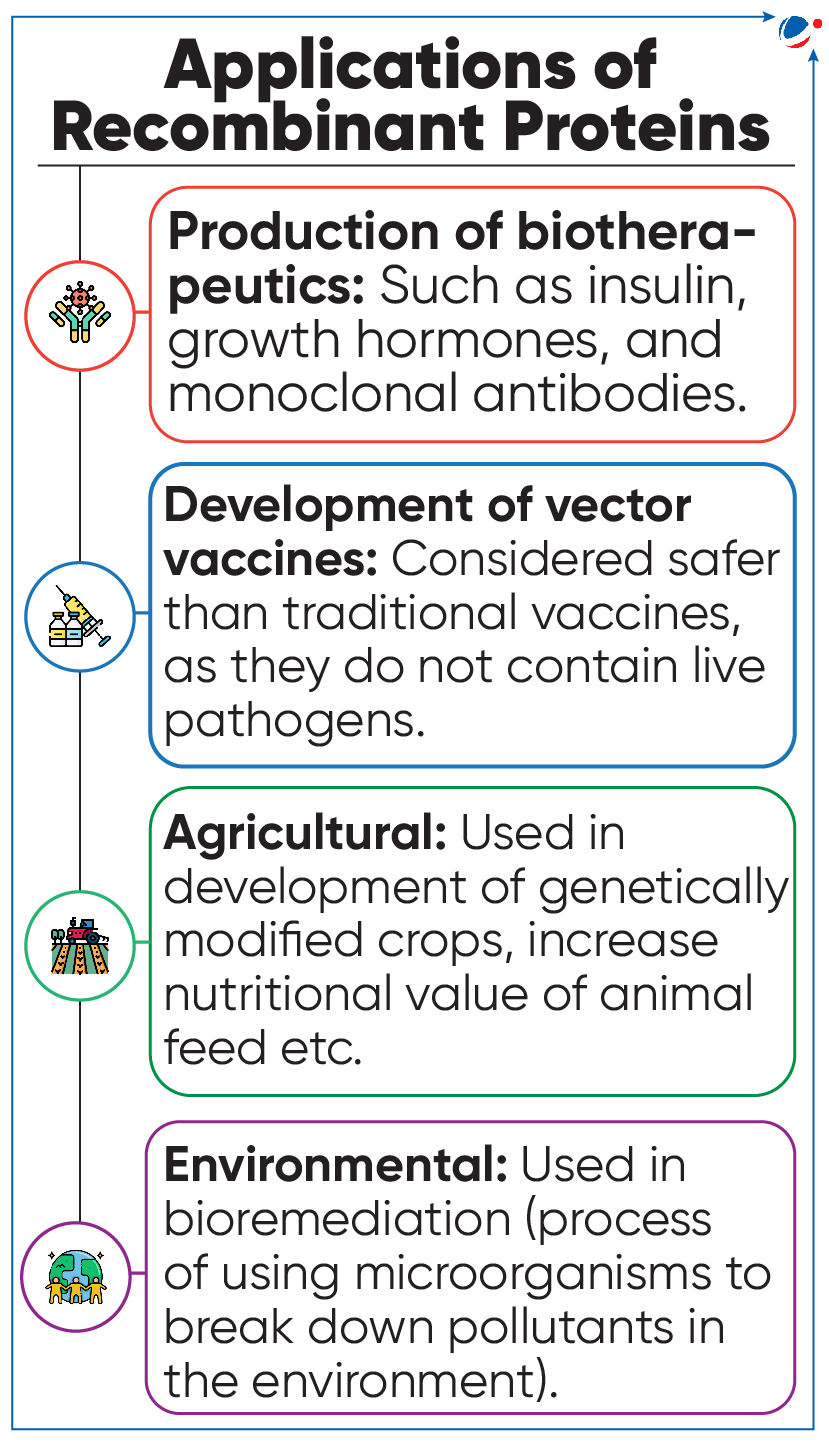New CRISPR/Cas9 gene-editing Platform
SafeEXO-Cas, exosome-based platform has been developed by Scientists at Columbia University.
- Exosomes are naturally occurring vesicles (small cellular containers) that have the potential to be manipulated to become promising drug delivery vehicles for on-demand in vitro and in vivo gene editing.
- It significantly enhances the delivery of CRISPR/Cas9 genome editing components to specific cells.
- It will also facilitate development of the precision medicine and will improve cancer treatment.
- Precision medicine (aka personalized medicine) involves disease prevention and treatment that takes into account differences in people’s genes, environments, and lifestyles.
About CRISPR/Cas9 Technology
- Clustered Regularly Interspaced Short Palindromic Repeats Associated protein 9 (CRISPR-Cas9) is a type of genome editing technology.
- It is ecogniz to change genetic code or edit Deoxyribonucleic acid (DNA) at particular locations.
Working:
- Works as cut and paste mechanism on DNA Strands. Genetic codes that need to be changed are identified.
- Cas9 protein is used as a pair of molecular scissors to cut off a part from strand, allowing modifications to the genome.
Applications of CRISPR:
- Edit genes in human embryo; Change genetic codes of crops to improve crop resilience; treating diseases like sickle cell disease etc.
- Tags :
- CRISPR/Cas9
- Exosomes
DeepTech startups in India
India’s Deeptech Dawn: Forging Ahead’ Report released by NASSCOM.
- Report highlights the different attributes of DeepTech startups.
Key findings
- Despite having the 3rd largest pool of DeepTech startups, India ranked 6th among the top 9 DeepTech ecosystems in the world.
- India currently has 3600+ DeepTech startups.
- Indian DeepTech startups have raised a cumulative $10 Bn in the last 5 years (2023-2019).
- In 2023, witnessed 77% decline in funding (in comparison to 2022).

About DeepTech Startups
- DeepTech startups leverage advanced technologies like AI, IoT, Blockchain, and Augmented Reality (AR)/Virtual Reality (VR) to create novel solutions for complex problems, often combining multiple technologies to redefine or create new markets. Ex: Agnikul, GalaxyEye, Sarvam AI
- Characterized by extended development timelines, high capital intensity, etc.
- Key Potential Areas: Promotes utilisation of Deep Technologies to reshape sectors like healthcare (AI-powered Diagnostics & Precision Medicine), Agriculture (Agribots & Automation), etc.
Key Challenges
- During the pre-commercialization phase, lacks access to the necessary infrastructure.
- Limited understanding of business operations and market dynamics.
- Competition from large enterprises for adequately skilled talent.
Steps needs to be taken by Government
|
- Tags :
- IndiaAI Mission
- DeepTech startups
AlphaFold-3
Google DeepMind and Isomorphic Labs have developed a new AI model, AlphaFold-3, that can predict structure of proteins, DNA, RNA, ligands, etc., and how they interact.
About Alphafold-3
- It can computationally predict the structure and interactions of all life’s molecules with unprecedented accuracy and speed.
- Given an input list of molecules (proteins, DNA, etc.), it generates their joint 3D structure, revealing how they all fit together.
- It can model chemical modifications to the molecules which control the healthy functioning of cells, that when disrupted can lead to disease.
- Tags :
- AlphaFold-3
- AI Model
Nuclear Technologies For Food Safety
According to the FAO, nuclear technologies are important tools for food safety.
- Role of Nuclear technologies has been highlighted at the International Symposium on Food Safety and Control, held in Vienna, Austria.
- Event was organized by the Food and Agriculture Organization (FAO) and the International Atomic Energy Agency (IAEA).
Nuclear technologies offer solutions to combat hunger, reduce malnutrition, enhance environmental sustainability etc.
- Also, technologies are complimentary to the One Health approach.
- One Health is an integrated, unifying approach that aims to sustainably balance and optimize the health of people, animals and ecosystems.
Role of Nuclear Technologies in Food system
- Animal health: Polymerase Chain Reaction (PCR) tests, a molecular nuclear technique, will rapidly detect diseases.
- Soil and water management: Radioactive nuclides left behind after nuclear events can help scientists determine the health of soil and rate of erosion.
- Insect pest management: Nuclear based Sterile Insect Technique (SIT) to manage pest.
- Technique involves mass-rearing the insects then sterilizing them through ionizing radiation before releasing them.
- Food safety and control: Food irradiation (the application of ionizing radiation to food) improves the safety and extends the shelf life of foods by reducing or eliminating microorganisms and insects.
- Plant Breeding and Genetics: Desired Genetic changes can be done by irradiation.

- Tags :
- IAEA
- Food Safety
- One Health
Daksha Project
IIT Bombay is leading the Daksha project.
- It is leading in close collaboration with the Physical Research Laboratory (PRL), Tata Institute of Fundamental Research (TIFR), Raman Research Institute (RRI), etc.
About the Daksha project
- It is an ambitious proposal to build two high-energy space telescopes for the study of explosive astrophysical sources.
- Each telescope will be equipped with sensors to cover Low energy to high-range energy bands
- Objectives
- Detect, localize and characterize high-energy counterparts to gravitational wave sources.
- High sensitivity detection and studies of Gamma Ray Bursts (GRB)
- GRB are short-lived bursts of gamma-ray light, the most energetic form of light.
- Significance of the project
- The two satellites will orbit on opposite sides of earth to give better coverage than existing missions.
- Will localize the source of emission of intense gravitational waves due to neutron star mergers or other reasons.
- Neutron stars are formed when a massive star runs out of fuel and collapses.
- Primordial Black Holes (PBH) mass window could be probed for the first time.
- PBH are a type of black hole formed in the first second after the birth of the universe.

- Tags :
- Daksha Project
- Gamma Rays
- Space Telescope
- Gamma Ray Bursts
TRISHNA: Indo-French Thermal Imaging Mission
TRISHNA (Thermal Infra-Red Imaging Satellite for High-resolution Natural Resource Assessment) mission is a collaborative endeavor between ISRO and CNES (French Space Agency) to monitor surface temperature and water management at regional to global scale.
About TRISHNA Mission
- Objective: Detailed monitoring of energy and water budgets of continental biosphere for quantifying terrestrial water stress and water use and high-resolution observation of water quality and dynamics.
- It will also help in a comprehensive assessment of urban heat islands, detection of thermal anomalies linked to volcanic activity and geothermal resources, etc.
- 2 Primary payloads
- Thermal Infra-Red (TIR) payload: Provided by CNES, features a four-channel long-wave infrared imaging sensor.
- Visible – Near Infra-Red – Short Wave Infra-Red (VNIR-SWIR) payload: Developed by ISRO, includes seven spectral bands designed for detailed mapping of surface reflectance.
- It will operate in a Sun-synchronous (SSO) orbit and is designed for a 5-year operational life.
- SSO is a particular kind of polar orbit in which satellites are synchronized to always be in the same position relative to the Sun.
- Significance: Climate monitoring such as droughts, permafrost changes, and evapotranspiration rates; better urban planning with detailed urban heat island maps and heat alerts; etc.
India’s international Space Cooperation
|
- Tags :
- TRISHNA
- ISRO-CNES
- Surface Temperature Monitoring
- Water Management
Earthcare Mission
Recently launched Earth Cloud Aerosol And Radiation Explorer (EarthCARE Mission) is a joint venture between the European Space Agency (ESA) and the Japan Aerospace Exploration Agency (JAXA).
- Objective: Provide a holistic view of complex interplay between clouds, aerosols and radiation, yielding new insight into Earth’s radiation balance against the backdrop of the climate crisis.
- Orbit Type: Sun-synchronous.
- On-board Instruments: Atmospheric Lidar, cloud profiling radar, multispectral imager (MSI), and broad-band radiometer.
Relationship between Clouds, Aerosol and Earth’s Radiation Balance
- Clouds: Along with aerosols, clouds play key role in Earth’s Heat Budget.
- They can either cool or warm the Earth’s surface by reflecting incoming sunlight or trapping outgoing infrared radiation.
- The extent of clouds’ warming or cooling effect on Earth depends on their shape, location, altitude, water content, and particle size.
- Aerosols: These are tiny particles such as dust and pollutants suspended in atmosphere.
- Directly they reflect and absorb solar radiation and trap outgoing radiation.
- And, indirectly they act as nuclei for cloud formation, which has a more substantial impact on the climate.
- Human activities like industrialization, agriculture, etc. significantly alter atmospheric aerosol concentrations, impacting regional climate patterns.
- Tags :
- Aerosols
- Clouds
- Japan Aerospace Exploration Agency
- European Space Agency (ESA)
- Radiation
Symbiotic System
NASA’s Hubble Space Telescope observed the symbiotic system HM Sagittae (HM Sge) in Milky Way Galaxy.
About Symbiotic System:
- It is a type of binary star system that consists of a white dwarf and a red giant.
- White dwarf is what stars become after they have exhausted their nuclear fuel.
- Red giant is a dying star in the final stages of stellar evolution.
- Here, the cooler red giant loses material which flows onto the hotter compact white dwarf star.
- The stolen material forms an accretion disk swirling around the white dwarf.
- Tags :
- Symbiotic System
- White Dwarf
- Red Giant
- Binary Star System
- Hubble Space Telescope
Amendments to International Health Regulations (IHR)
The 77th annual World Health Assembly (WHA) meeting recently concluded with an agreement on a crucial set of amendments to the IHR, 2005.
- Also, decided to extend the mandate of the Intergovernmental Negotiating Body (established in 2021) to finish its work to negotiate a Pandemic Agreement within a year.
About IHR
- Successor of the International Sanitary Regulations (1951).
- Aim: An overarching legally binding framework that defines countries’ rights and obligations in handling public health events and emergencies that have the potential to cross borders.
- Members: Comprises all 194 WHO Member States plus Liechtenstein and the Holy See.
- Need of Amendments: Experience of epidemics and pandemics, from Ebola to COVID-19, highlighted the need of better public health surveillance, response and preparedness mechanisms around the world
Key Amendments
- Defining the Pandemic emergency as a communicable disease that has a “wide geographical spread” or a high risk of one, and has exceeded or can exceed the ability of national health systems to respond.
- Establishing a Coordinating Financial Mechanism to address the needs and priorities of developing countries.
- Establish a States Parties Committee for effective IHR implementation.
- Create National IHR Authorities to improve coordination among countries.
- Tags :
- World Health Organization (WHO)
- IHR
- World Health Assembly
WHO Launches Its First Investment Round
Investment Round has been launched at the 77th World Health Assembly (WHA).
- WHA is a decision-making body of World Health Organisation (WHO). The theme of the Assembly is All for Health, Health for All.
- Health for all as a concept was evolved in the Alma-Ata Declaration (1978) of WHO to promote Primary Health Care.
The Investment Round aims to mobilize resources for WHO’s core work for the next 4 years (2025-2028) (refer image).
- Under it, $ 7 Bn will be mobilized to support the countries so that they can respond to health challenges.
Funding of WHO
- WHO receives funding from two main sources-
- Assessed contributions: Due that countries pay to be a member of the Organization.
- These are a percentage of a country’s GDP as agreed by the UN General Assembly and approved every two years.
- Voluntary contributions: Comes from Members or from other partners. Major source of total funding.
- It is further categorized into Core voluntary contributions, Specified voluntary contributions etc.
- Assessed contributions: Due that countries pay to be a member of the Organization.
Challenges in funding of WHO:
Assessed contributions cover less than 20% of the total budget, Withdrawal of funding (E.g. Temporary suspension of funding by US) etc.

- Tags :
- WHO
- WHA
- Alma-Ata Declaration
Biopharmaceutical Alliance
India, South Korea, the US, Japan, and European Union launched Biopharmaceutical Alliance in response to the drug supply shortages experienced during the COVID-19 pandemic.
- The announcement was made at the inaugural meeting of the Biopharmaceutical Alliance during the Bio International Convention 2024.
Significance
- Build a reliable, sustainable, and resilient supply chain in pharmaceuticals as production of essential raw materials and ingredients is concentrated in a few countries.
- Coordinate bio policies, regulations, and R&D support measures with the member countries.
- Tags :
- Biopharmaceutical Alliance
- Bio International Convention
- Drug Supply
Recombinant Proteins
Researchers at Indian Institute of Science (IISc) have developed a new process for production of recombinant proteins.
What are Recombinant Proteins (RPs)?
- These are modified or manipulated proteins encoded by recombinant DNA (rDNA) for increasing production of proteins, modifying gene sequences, and manufacturing useful commercial products.
- rDNA is artificially made DNA strand that is formed by combination of two or more DNA molecules.
- rDNA technology can be used to combine (or splice) or transfer DNA from different species or to create genes with new functions.
Production of Recombinant Proteins
- RPs such as vaccine antigens, insulin and monoclonal antibodies, are mass-produced by growing modified bacterial, viral or mammalian cells in large bioreactors.
- Most widely used organism is yeast Pichia pastoris (now called Komagataella phaffii) and it utilizes methanol for production of RP.
- However, methanol is highly flammable and hazardous, requiring stringent safety precautions.
- Researchers have now developed an alternative safer process that relies on a common food additive called mono-sodium glutamate (MSG).
- Escherichia coli (E.Coli) is also one of the organisms of choice for RP production due to its well-characterized genetics, rapid growth, and high yield production.

- Tags :
- Recombinant Proteins
- rDNA
- E.Coli
Jumping Genes
New plant species (Stellaria mcclintockiae) from Kerala has been named after Barbara McClintock who won the Nobel Prize for her discovery of Jumping Genes.
About Jumping genes
- Jumping genes, aka transposable elements, are DNA sequences that can move or “jump” from one location to another within the genome, causing nearby genes to become active or inactive.
- They can replicate themselves and insert copies at new locations.
- Their movement can cause genetic mutations and contribute to genome evolution.
- Tags :
- Jumping Genes
- DNA
- Barbara McClintock



